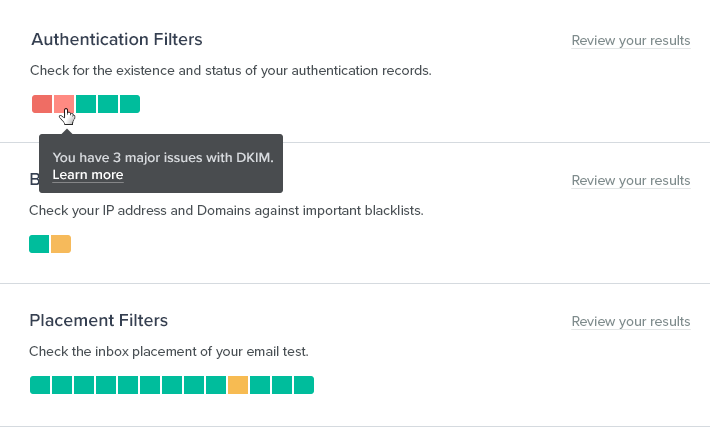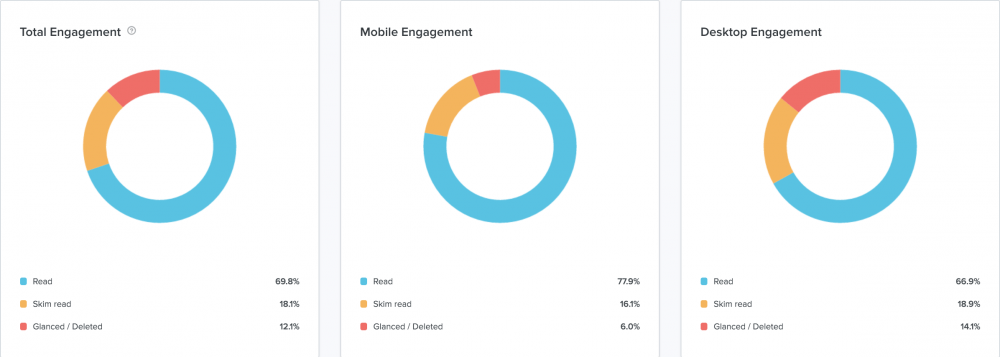Creating an email can take a lot of work. So for it to land in the junk folder? A little soul crushing, not gonna lie. You might be tempted by the hundreds of articles on spam trigger words to avoid, but don’t be fooled. Spam trigger words are mostly an email deliverability myth, and it now takes more than words to make it into the inbox.
🚫 #EmailMarketing spam trigger words are an email deliverability myth.
✅ Here’s what spam filters actually look at.
Tweet this →
Let’s get to the truth behind how spam filters really work.
More than words: how spam filters actually work
When email marketing first took off in the 1970s and ‘80s, it was helpful to know which words to avoid so your email could escape the dreaded junk folder. However, this tactic made it easier for spammers to find their way into the inbox, too.
As spammers have become smarter, though, so have spam filters.
Mailbox and internet service providers (ISPs) like Outlook and Gmail now look beyond words to filter incoming email to their users. Three ways they do this are by checking Internet Protocol (IP) addresses and domains, email authentication, and subscriber engagement.
Tip: You can be proactive with email spam testing so you’re not caught in an email deliverability dilemma—those can be hard to get out of!
Checking IPs and domains
Is your email coming from a blocklisted IP address? Are you linking to blocklisted websites? Is there something suspicious in your email header like a sender email address that clearly doesn’t match the sender’s name?
ISPs use a sender score or reputation to determine how credible or legitimate you are based on emails coming from your IP addresses and domains. Significant abuse gets you blocklisted.
Spammers try to get around this by churning through IP addresses and domains, which is why when you get a new IP address or domain, ISPs might think you’re spam unless you do a proper IP and domain warmup.
Because of this, many spam filters also look at email authentication.
Verifying email authentication
You’ve got to prove you’re the real thing. That’s where email authentication comes in. There are three standards:
- Sender Policy Framework (SPF): a way to check that a sender’s domain is in fact coming from said domain
- DomainKeys Identified Email (DKIM): a “digital signature” to show your email is authorized and actually associated with your domain
- Domain-based Message Authentication, Reporting & Conformance (DMARC): a policy and reporting layer on top of SPF and DKIM to help combat spoofing and phishing
Still, spammers continue to evolve right along with spam filters. It doesn’t help that people’s definition of spam has evolved as well to include legitimate emails.
With this in mind, ISPs have stepped things up even further, making it harder for spammers and marketers alike to “game” the system by giving subscribers the key to spam filtering logic.
Digging into subscriber engagement
We’re not just talking about subscribers manually filtering their emails (although that plays a role, too). Using advanced algorithms, spam filters now look at how a subscriber engages with email—whether positive or negative. For example…
Positive impact: Are subscribers opening, responding to, or forwarding your email? Are they marking your emails as “This is Not Spam”?
Negative impact: Are subscribers hitting the spam or junk buttons for your emails? Or deleting them immediately without even reading?
According to Gmail’s Anti-Spam Team, “Think of how you can make the user love your [e]mails.” That’s right: Straight from one of the top ISPs in email client market share, it’s been revealed that email engagement is taken very seriously.
This means that even if your emails are legitimate, that’s not good enough anymore. They need to be wanted.
So how can you avoid the spam filter?
Do what spammers cannot: Prove you are who you say you are and send relevant content that your subscribers love.
Okay, so there is some truth to avoiding spam trigger words.
Alone, specific words won’t trigger spam filters (unless set up by a business or individual that way). But words are something to consider if your email sender reputation is already bad. Hopefully you never get to that point, but if you do, you have bigger things to worry about than spam trigger words.
That’s why it’s important to be proactive. According to our 2020 State of Email Report, Fall Edition, Only 70% of marketers use spam filter testing before sending emails, but of those, only about one-quarter do so often enough.

Ultimately, there’s no magic solution or list of spam trigger words to avoid that’ll get you out of the junk folder. But if you properly authenticate your emails, grow your email list with explicit consent, and put your subscribers at the center of everything you do, you’re already well on your way into the inbox—and the hearts of your subscribers.
We’ve got some great tips to help you get started:
Have any questions or comments? We welcome them below. And please share this article (for the love of email!) to help us put an end to the myth of spam trigger words.
